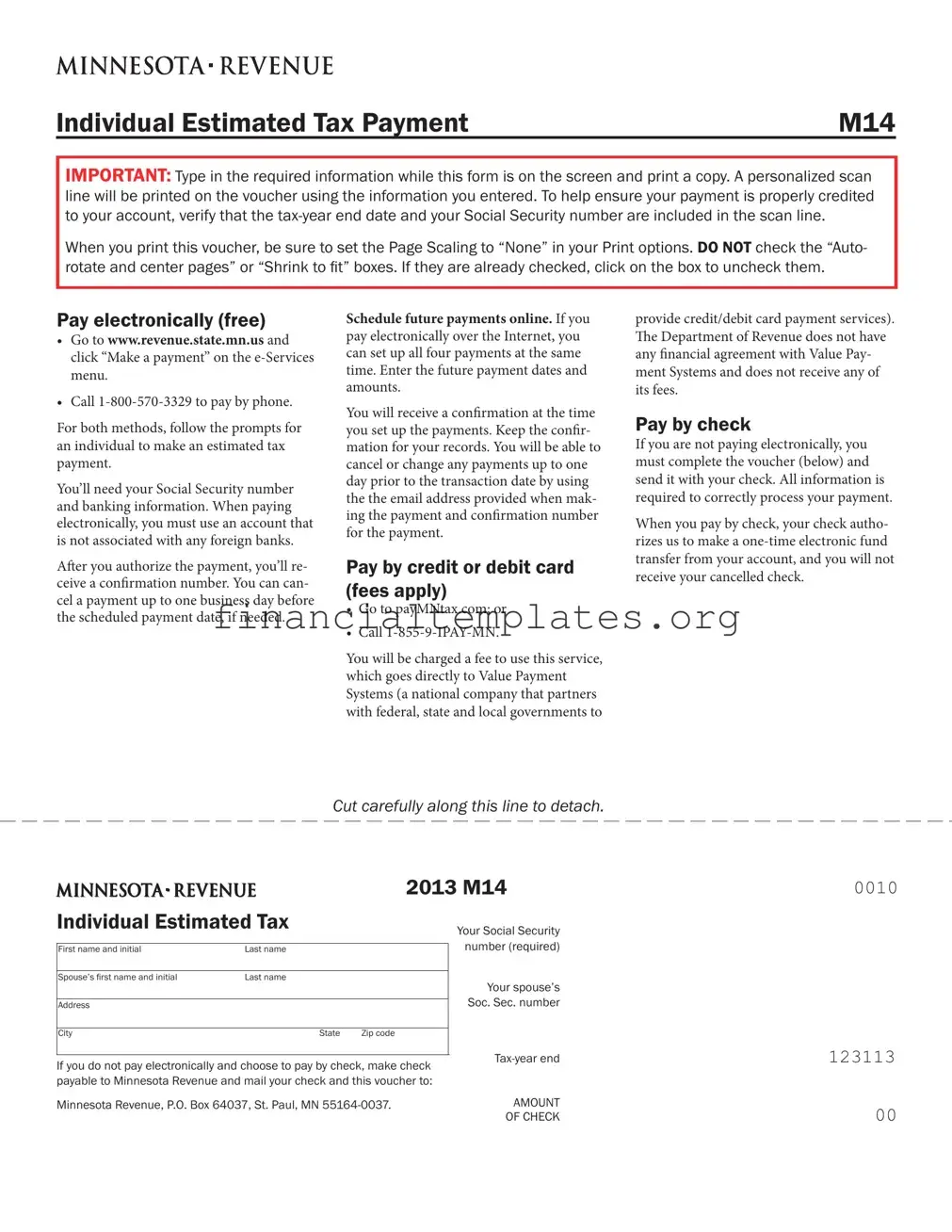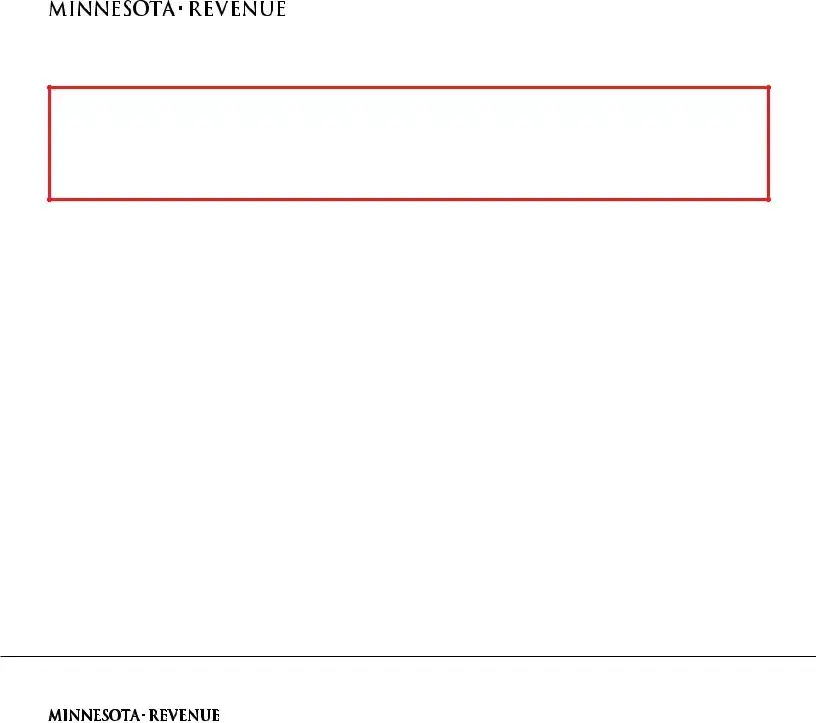Navigating tax obligations can often seem daunting, but the Individual Estimated Tax Payment form, commonly referred to as form M14, provides a structured way for individuals to manage their tax payments throughout the year. This form is an essential tool for those who need to pay taxes on income that isn't subject to regular withholding taxes, such as earnings from self-employment, interests, dividends, rents, and alimony. The form’s functionality allows taxpayers to type in their information directly on the screen, ensuring that a personalized scan line is printed on the voucher. This scan line is critical for the accurate crediting of payments to the taxpayer's account, encompassing the tax-year end date and the taxpayer's Social Security number. The instructions emphasize the importance of proper print settings to avoid any mishaps in the processing of the payment voucher. For those who prefer the convenience and immediacy of electronic payment options, the form details steps for online or phone payments, including the necessity for bank information that is not linked to foreign banks. In contrast, those opting to pay via credit or debit card, or by a traditional check, are informed of the applicable procedures and fees. The detailed guidance provided ensures that every taxpayer can select a payment method that suits their preferences while adhering to the requirements for making their estimated tax payments effectively and on time.

